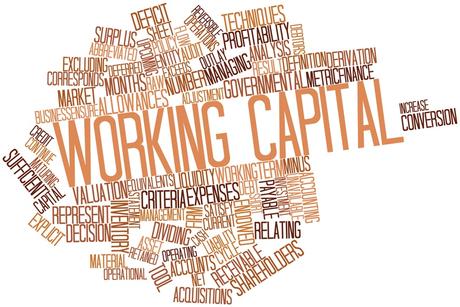
Short-term working capital is a necessity for corporations and small businesses to cover expenses, keep it operating, and to meet all financial obligations. Short term is a period referred to one year up to a few years. Wikipedia defines working capital as "a financial metric representing operating liquidity available to a company or organization". Without it, businesses cannot operate and have enough cash to pay debts and future operating expenses. Some entities gain working capital in different ways and for various reasons, including service and product expansion, for an example.
How to Calculate Your Working CapitalTo calculate your working capital, whether you're a small business or a corporation owner, deduct current liabilities from current assets. Its computation is on a 12-month period of both liabilities and assets. If assets are larger than current liabilities, your company is facing financial trouble which may require financing of working capital.
Your current assets might include cash, securities, inventory, accounts receivable (future payments from customers), or cash equivalents. Cash is the balance in your savings and checking accounts, and cash equivalents are government bonds and mutual funds. Securities are your shares in mutual funds and stocks.
Current liabilities are financial obligations to vendors, suppliers, and accounts payable which are your unpaid bills. It might include interest owed to bondholders and required payments on debts that are short term. Your yearly taxes for payroll, income, city, and/or state are also current liabilities.
Why You Need Working CapitalAs discussed earlier, working capital helps businesses meet financial obligations to pay for daily operations. Most of it is usually in receivables for future payments to your company. In a 2013 survey conducted by Sageworks on banking professionals and working capital applicants, it showed that more business owners applied for loans because of low-interest rates. Forbes provided the survey information in April 2013 revealing most of the loans were to finance receivables.
Approximately 17 percent of loan officers said businesses were applying for loans to use capital in accounts receivable. The survey also stated 40 percent of banking professionals reported business owners applied for financing for other capital purposes. Only 19 percent of loan officers processed applicants seeking capital to purchase equipment, and 20 percent of the professionals handled loans for new space or facility expansion.
Short-term working capital covers operational and administrative expenses of businesses over a 12-month period. If you own a start-up company, working capital is available in the form of loans through SBA (Small Business Administration) and financial institutions, such as banks and credit unions. Some institutions offer loan services of cash credits, overdrafts, and purchasing bills. The financing option of working capital will depend on how much capital needed and the timeline for repayment.

Tom James,
